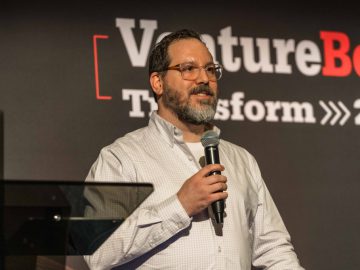youth sitting © Mirko Vitali – stock.adobe.com
A panel of HIV leaders from around the world met today at the International AIDS Conference in Munich, Germany to discuss the importance of empowering youth to prevent and treat HIV.
The panel was moderated by Mercy Luwi Katoka, program officer and youth advocate at FHI 360, a healthcare equality organization in Zambia.
Adolescents and young people represent a growing population of HIV positive individuals. In 2022, 480,000 people ages 10 to 24 were diagnosed with HIV. Although this number has been cut almost in half in the last decade, numbers are still not low enough to reach the 2030 HIV goals, which aims to reduce new HIV cases worldwide by 90%. HIV testing in youths is important because young people are statistically more likely to engage in riskier behaviors.
When it comes to building effective youth led projects, you must start planning from the source, according to Lesley Gittings, Ph.D., an assistant professor at Western University in Ontario.
“When young people are engaged early in program design, programs are way more relevant and effective,” Gittings said. “Young people are a unique group and as adults, we often don’t get it right.”
The five panelists discussed the ways that youth must be present during program design, delivery and evaluation in HIV programs in order for the programs to be successful.
Rashida Ferrand is a clinical HIV specialist and professor at the London School of Hygiene and Tropical Medicine. During her research, which included an advisory board made up of young people, they decided to distribute condoms with the phrase ‘have fun sex’ to appeal to the age group.
One of the largest obstacles to engaging youth in HIV care is that people don’t fully understand what it means for you to participate, according to Tanyaradzwa Makotore, a DREAMS PrEP ambassador from Zimbabwe.
“Sometimes people are just ticking boxes,” Makotore said. “An organization will send 10 young people to a conference, but when they get there, what exactly are they doing? Young people should be invited to places to fully participate.”
Another obstacle is existing laws in countries, particularly in Africa.
“If people aren’t employed, they’re not going to worry about taking PrEP,” Ferrand said.
Technology like the internet and smart phones can leverage the playing field when they are available. Alejandra Cabrera, the Regional Strategic Communications and Marketing Director at the Pan American Social Marketing Organization (PASMO) in Guatemala City, said that PASMO has recently launched a HIV resource chat bot that can be accessed through Facebook Messenger.
“The reason why we developed it is because a lot of people were writing to us at night, after work, after school,” Alejandra Cabrera said. Cabrera is the Regional Strategic Communications and Marketing Director at the Pan American Social Marketing Organization in Guatemala City. “Our chat bot is available 24/7 now.”
However, in rural areas across the globe, this sometimes isn’t the case. For these reasons, in person care and resources are just as important.
“Internet access and mobile phone access is not equitable in all areas, so let’s not leave out young, indigenous, rural communities.”
“You can lead a normal life with HIV, you can go to school – HIV does not affect your brain,” Grace Kamau, regional coordinator at the Africa Sex Workers Alliance explained how she and her colleagues reach out and support young women who come to their clinics. “We let them know they can live normal lives on immunosuppressants.”




